Simaudio 600i vs. 700i (and the i7 too!)
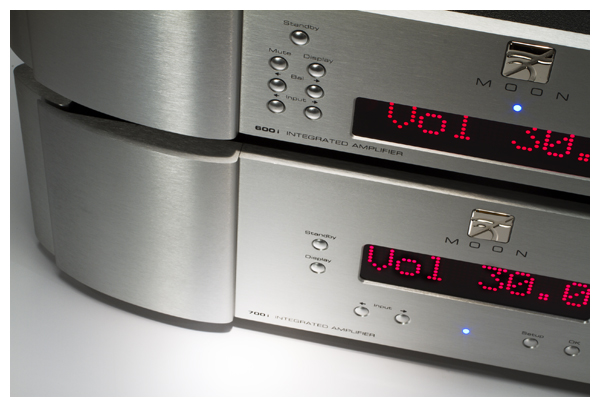
Following up a highly successful product always presents audio manufacturers with problems. No matter how long a product’s life happens to be, when a change occurs, someone is going to be crabby because they just bought the “old” box and now there is a “new” box on the dealer’s shelf. Somehow, with a certain segment of the audiophile population, all reason goes out the window. For those of you that own a Simaudio Moon i-7 integrated amplifier, take a deep breath and relax. Your amplifier is just as good as it was the day you bought it.
Now that we’ve cleared the air, let’s move on. Having just finished work on its Moon 850P Reference two-channel preamplifier and highly regarded Moon 880M monoblocks, Simaudio engineers added more to their knowledge base and redesigned the top end of the company’s integrated amplifier range. Where the 150 watts-per-channel i-7 once represented Simaudio’s peak integrated, the manufacturer now offers the 600i and 700i, with 125 watts per channel and 175 watts per channel, respectively. Priced at $8,000 and $12,000, both models are also pricier than the former i-7.
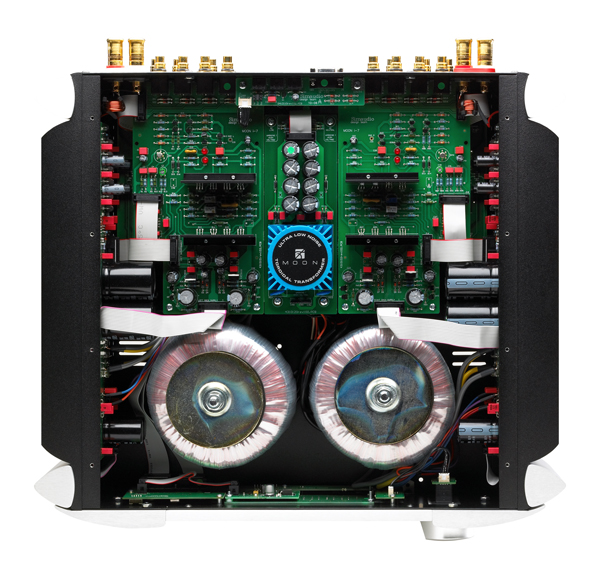 A Solid Case for An Integrated
A Solid Case for An Integrated
Mimicking the example set by the i-7, the 600i and 700i are dual mono designs, with gigantic toroidal power transformers under the hood. And both amplifiers have an elegant, understated look and feel. But the second you pick up either of them, the message is clear: these are serious amplifiers.
While some hardcore audiophiles always look down on the integrated amplifier concept, these days, it’s nothing to sneeze at. The Simaudio amplifiers offer the flexibility and performance of comparably priced separates, and best some of the latter in their respective price class. For the music lover that doesn’t necessarily want a gigantic rack full of gear and cables yet still craves high performance, an integrated is the way to go. Since Simaudio has its own in-house 5-axis CNC machining center, these amplifiers have the visual appeal of the world’s finest and most expensive components. They will look right at home in a design-conscious environment and are available with silver, black, or a combination of black and silver anodizing.
In the end, however, it’s about performance. Having both the amplifier and preamplifier on the same chassis eliminates not only at least one set of interconnects and one power cord, it presents the ultimate in system synergy. With an integrated, you’ll never again agonize over whether you picked the perfect cable to go between your amp and preamp.
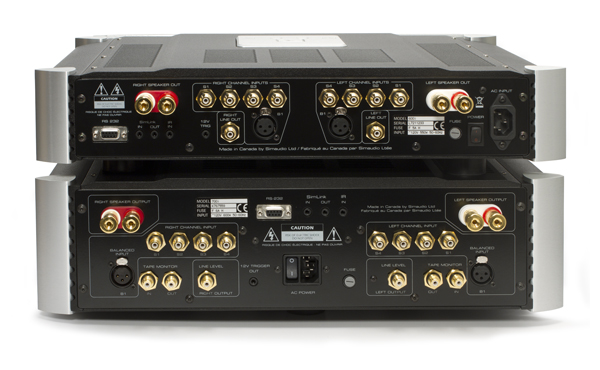 Ins and Outs
Ins and Outs
Because of the dual mono design, both amplifiers feature mirror images of the inputs and outputs on the respective side of the chassis rather than having them grouped together. It’s a different approach than that taken by many other manufacturers, but once you get used to it, everything works fine. Both amplifiers have four sets of RCA line level inputs and a single balanced input; the 700i has tape monitor inputs and outputs. And, in what makes for a nice touch, both offer a variable level output (RCA only) to drive an additional amplifier or powered subwoofer.
The heavy-duty WBT binding posts will handle even the most massive speaker cables, but those utilizing really monstrous cable will have to work to get the posts to the level snugness they might desire. An RS-232 port, IR port, and 12V trigger (SimLink) ports also reside on the rear panel, so either amplifier can easily be put to use in a home automation system. Overall, along with great ergonomics, the rear panel features an adequate amount of inputs and outputs.
Since it’s a fully balanced differential amplifier, my only complaint with the i-7 relates to the absence of two or three balanced inputs on the rear panel. As Simaudio makes fully balanced phono preamplifiers and CD players, it makes no sense to not take advantage of connecting to the amplifier in balanced mode. Like the other Simaudio products we’ve reviewed, the 600i and 700i require at least a few hundred hours on the clock before sounding their best. Out of the box, they definitely sound stiff. These amplifiers get approximately 60% of the way to their ultimate sound quality within the first 48 hours of play, and the rest takes time—a situation that mirrors that associated with many high-powered solid-state amplifiers. While not a green solution, I suggest running your 600i or 700i 24 hours a day (with signal passing through) for the first few weeks of ownership. During the course of our tests, we left them on non-stop.
I placed the 600i and 700i on a Finite Elemente Pagode Signature rack, and used Simaudio’s 750D DAC/CD player as a primary source component. The AVID Acutus SP Reference with SME V tonearm and Koetsu Urushi Blue cartridge via the Audio Research REF Phono 2 served as my primary analog source. The whole system was cabled with Cardas Clear interconnects and speaker cables. To ensure that neither of the amplifiers’ performance would be compromised, I employed my $150,000 GamuT S9 speakers—the anchor of my reference system, normally powered by $100k of Burmester electronics—to compare all three Simaudio amplifiers.
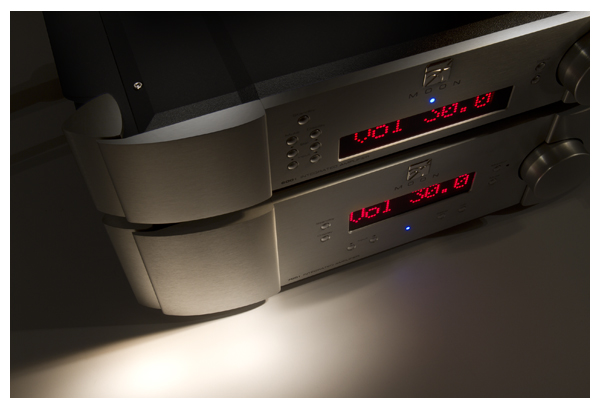 600i vs. 700i
600i vs. 700i
Each new Simaudio unit is a stellar example of an integrated amplifier providing a worthy alternative to separates. They both have lightning-fast transient response along with a healthy amount of control, whether reproducing the higher-frequency transients of a cymbal strike or controlling the thwack of a bass drum. While some solid-state amplifiers offer too much detail, the 600i and 700i achieve the balance of high detail without being harsh or fatiguing—a minor miracle on its own.
On paper, there are a few main differences between the 600i and the 700i. The 700i has its own dedicated power supply for the preamplifier, while the 600i shares its power supply with both sections. The 700i also features a considerably larger power transformer with greater reserve capacity. While both amplifiers offer a “no overall feedback” design, the 700i takes it a step further, incorporating Simaudio’s LYNX design. This utilizes a four layer gain board design, that puts the gain and output sections in closer proximity than they would be otherwise, making a significant improvement in the 700i’s utter transparency.
Listening tests back up claims made in Simaudio’s white papers. DCC’s remaster of 10cc’s The Original Soundtrack, with that radio classic you’ve heard a million times, “I’m Not In Love,” sounded wonderful via the 600i. It kept the vocal track well in front of the heavily layered mellotron intro, and the hints of acoustic guitar well in the lower back of the sound field. Quickly switching to the 700i and playing the track again became a stunning experience, especially after the first chorus, when the female vocalist whispers, “big boys don’t cry.” On the larger amplifier, her voice almost lept into my lap, possessing more dimension, space, and realism.
Along with a neutral, clean tonality, both amplifiers have considerable dynamic punch and headroom that go beyond their power ratings. While the GamuT S9 and B&W 805Ds are very easy to drive, the Magnepan 1.6s are another story. The latter usually require hundreds of watts to really rock. The 600i had no problem handling big bass drum that opens the title track of the Drive-By Truckers’ recent Go-Go Boots, complete with sufficient weight and texture. And the 700i, well, it went one louder. Highly impressive showings from both models.
The key word here? Refinement. Such welcome polish makes it easy to believe you are listening to separate components. But do you want a 330i or an M3 Sport? That’s a question only your checkbook can answer. The tonality of both amplifiers is identical, but the extra oomph offered by the 700i is hard to forget once you’ve experienced it. Horsepower is always intoxicating.
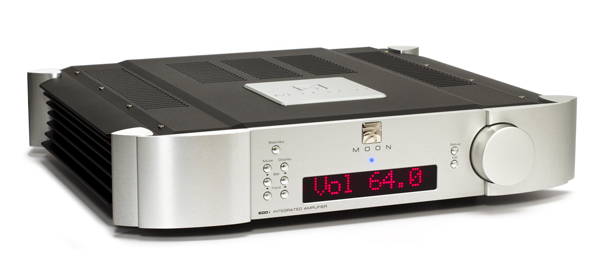 Living In the Past
Living In the Past
My impressions of the new amplifiers were extremely positive, but I was also very curious to compare them to the i-7. Reviewed in Issue 16, the latter received high marks for transparency, tonality and dynamic punch; a pretty awesome package for $6,000. We purchased the review sample, and it has been staff writer Mark Marcantonio’s reference for the last two years. He and I were more than a little jumpy when we sat down on a weekend to compare the two newcomers to the faithful standby.
If you find one used, the i-7 still sells on the secondary market for about $5,000. With many components being blown out the door for half of their list price only months after purchase, such residual value speaks volumes the i-7. So, should you ditch your i-7 and trade up? It depends. Starting our comparison by listening to Adele’s recent 21 left us thinking that the older model was the way to roll, as it claimed a warmer overall tonality than that of the new models. 21 is somewhat compressed, with a slightly bright tonal balance. So, we brought out a few new Audio Wave Blue Notes and Sheffield Labs favorites to get a better feel for acoustic performances. That’s when the tables turned in favor of the current crop.
Once the program material featured more dynamic range, the additional bass grip delivered by the new amplifiers made such sonic elements more decisively known, and the higher level of resolution provided a more natural musical experience. Whether we listened to Black Sabbath stomp through “Iron Man” or Dexter Gordon blast out “Tom Cat,” these amplifiers had a natural ease along with a lightning-fast attack and equally quick and clean decay that allowed for long listening sessions without any trace of fatigue.
Spinning vinyl further widened the gap, with the differences between analog and digital being much greater through both new amplifiers than they had been with the i-7. Listening to the new remaster of Boogie With Canned Heat proved trippy, staying true to the original psychedelic vibe with an incredibly big sound. The extra resolution and three dimensionality allowed the analog pressings to breathe in a way they didn’t when played through the i-7, which, via comparison, sounded warmer and slightly slower. However, in all fairness, if your music collection is primarily comprised of digital and/or newer, more compressed recordings, you might favor the older i-7. Such extra warmth goes a long way to tame digititus.
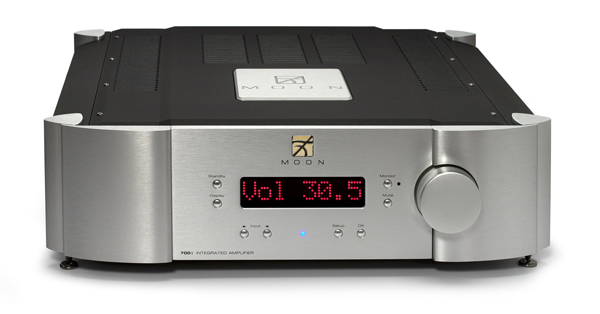 Spending Other People’s Cash
Spending Other People’s Cash
It’s always easier to spend other people’s money, so rush right down to your Simaudio dealer and buy the 700i. According to the gloom-and-doom messages we seemingly encounter on a daily basis, the world’s economy is going to collapse sooner rather than later, so you might as well have an awesome stereo before the world ends.
All kidding aside, these are both great amplifiers and easily the equal—if not the better—of any comparably priced separates I’ve heard. The 700i possesses even more refinement than the 600i, and its extra power will drive more speakers. However, you can almost put your hands on the 600i and its companion CD player/DAC, the 650D, for the price of the 700i. After side-by-side listening, the progression between the two amplifiers is fairly linear. It’s not as if you get 85% of the goods with the smaller amplifier and pay a premium for the bigger one. Your room and speaker choices will be determining factors. The more volume you crave, the more you will probably be pushed towards the higher-powered 700i. And, it’s worth noting that even at modest volume levels, the 700i reveals more musical information and offers a larger presentation in all three dimensions.
If nothing else, the decision to buy the 700i over the 600i may be determined by your system expansion plans. The 600i is certainly no slouch, but might leave you craving down the road, where the 700i likely has a higher chance of staying in your rack for a longer period. Me, I’d eat mashed-potato sandwiches for a few months and buy the bigger amp.
Simaudio 600i and 700i integrated amplifiers
MSRP: $8,000 and $12,000, respectively
Manufacturer information:
Peripherals
Digital Source
Simaudio 750D CD player/DAC w/Sooloos Control 15
Analog Source
AVID Acutus SP Reference w/SME V and Koetsu Urushi Blue, Audio Research REF Phono 2
Speakers
GamuT S9, B&W 805D, Magnepan 1.6
Cable
Cardas Clear I/C and Speaker
Power
Running Springs Maxim, Mongoose and HZ power cords



